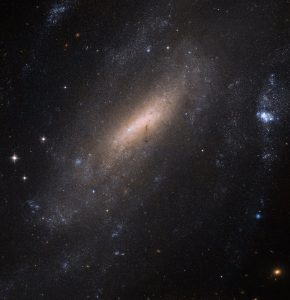Uno sguardo ravvicinato a IC 5201
Nel 1900, utilizzando un telescopio all’Osservatorio di Cape Town in Sudafrica, l’astronomo Joseph Lunt ha individuato nella costellazione meridionale della Gru questo oggetto affascinante: una galassia a spirale barrata che ora si chiama IC 5201.
Oltre un secolo più tardi la galassia mantiene tutto il suo splendore ed è ancora interessante per gli astronomi. In questa immagine complessa l’Advanced Camera for Surveys (ACS), a bordo del telescopio Hubble, risolve le singole stelle all’interno della galassia, rendendola uno strumento prezioso per analizzare come varie popolazioni di stelle hanno preso vita, sono evolute e hanno terminato la loro esistenza nel cosmo.
IC 5201 si trova ad oltre 40 milioni di anni luce di distanza. Come due terzi di tutte le spirali che osserviamo nell’Universo, inclusa la Via Lattea, la galassia ha una barra di stelle che attraversa il suo centro.
[ Barbara Bubbi ]
https://www.spacetelescope.org/images/potw1650a/
Credit:ESA/Hubble & NASA

Lascia un commento